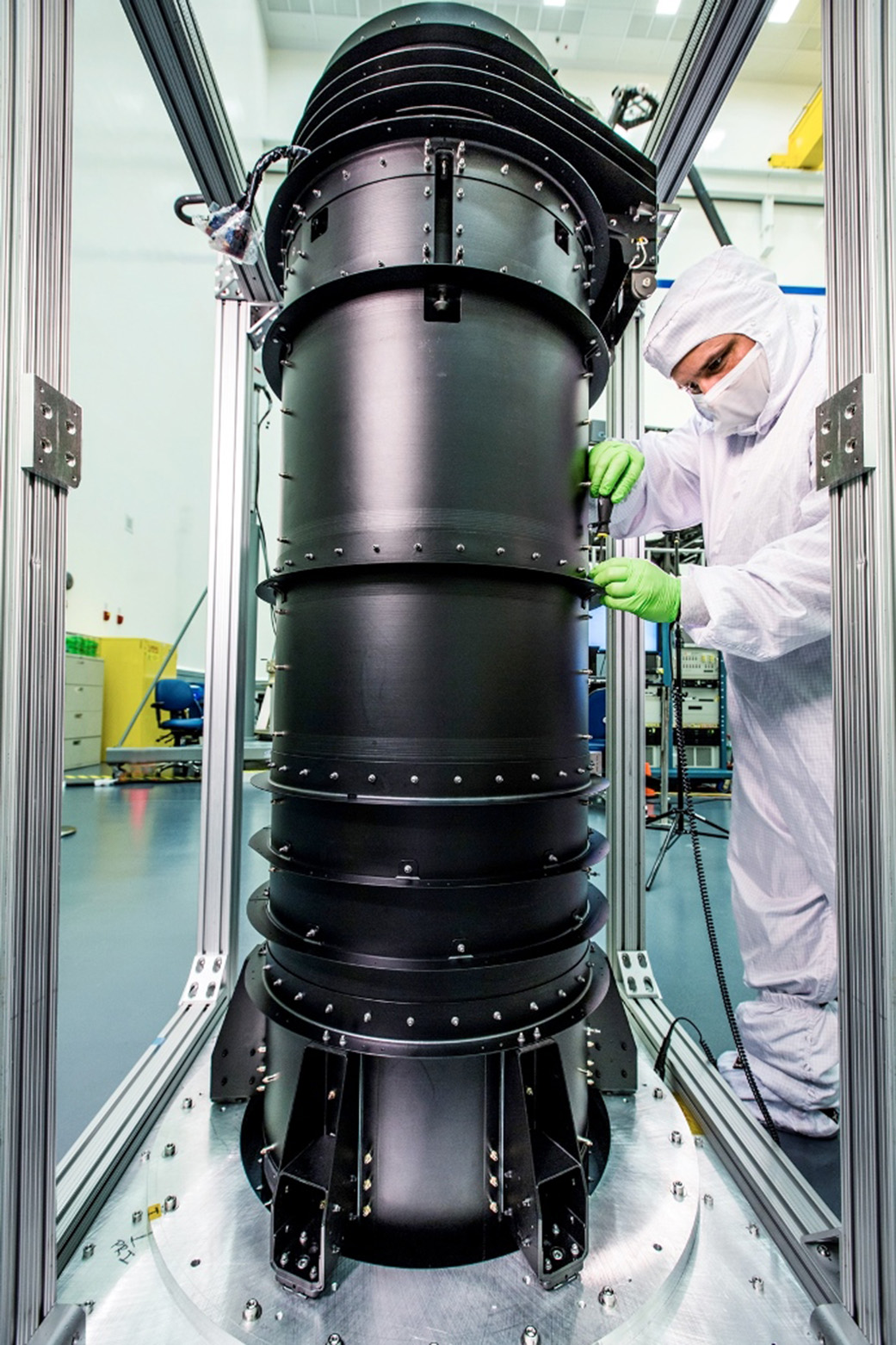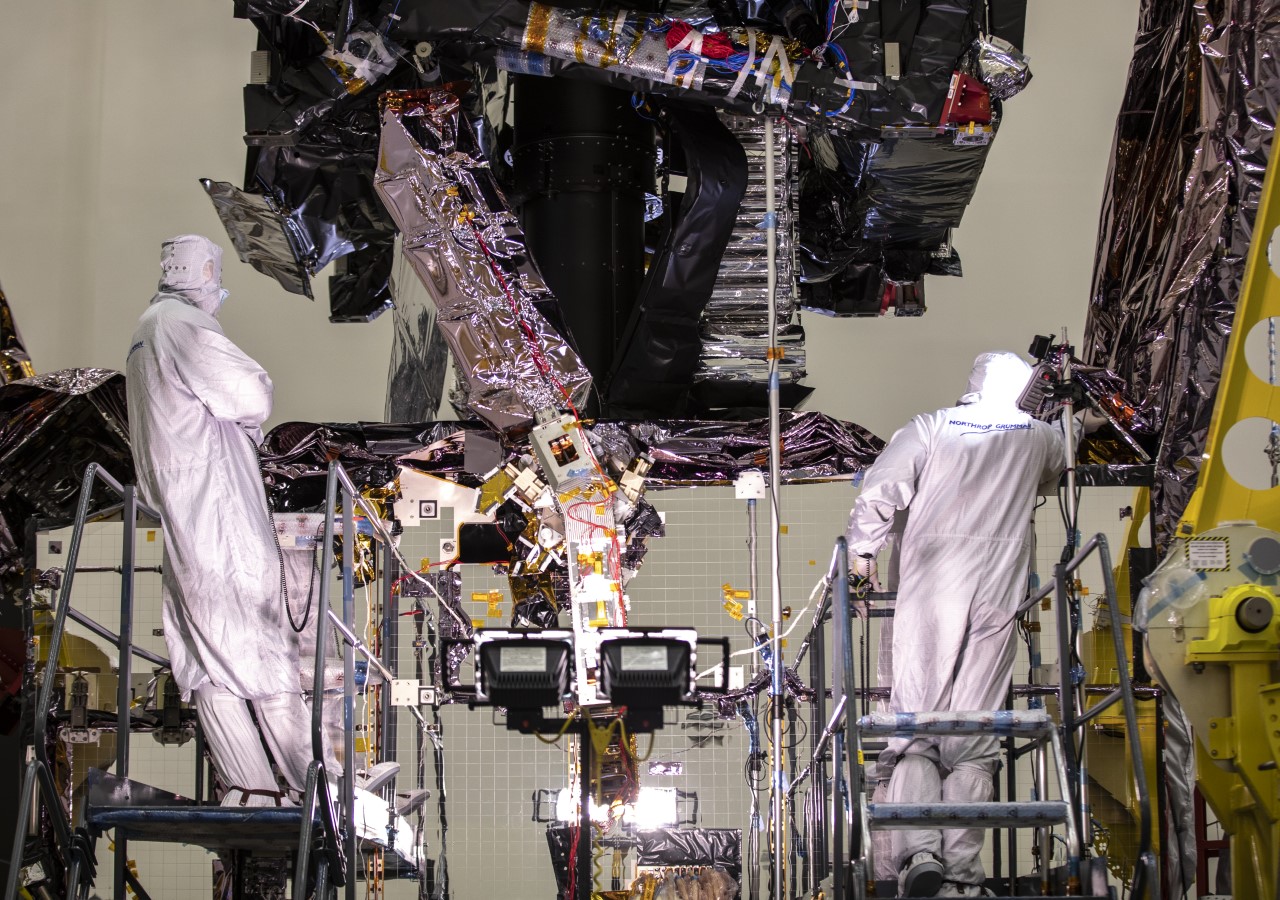NASA’s James Webb Space Telescope marked another significant testing milestone with the successful deployment of a critical structure that plays an important role in how the observatory will unfurl and deploy once in space.
The Deployable Tower Assembly is an integral piece in the operation and support of the spacecraft and telescope structures. It also helps Webb maintain its necessary operating temperatures by separating its mirrors from the comparatively warmer Sun-facing side and spacecraft bus. Earlier this month, the tower was successfully deployed during the final post-environmental testing phase of the fully assembled telescope at Northrop Grumman’s Space Park in Redondo Beach, California.
The Deployable Tower Assembly looks like a large, thick black pipe and is made out of graphite-epoxy composite material to ensure stability and strength with extreme changes in temperature like those encountered in space. The tower features two large nested telescoping tubes, connected by a mechanized lead screw. It is a deployable structure that is both very light and extremely strong and stable.
Several days after Webb is launched, the tower will deploy to separate the telescope mirrors and instruments from the spacecraft bus. This separation effectively isolates the telescope from vibrations and conducted heat coming from the spacecraft bus. Additionally, this extension allows for the rest of Webb’s larger deployable components, like its sunshield and primary mirror, to have enough room to make their own sequence of complex movements afterwards. This intentional spacing the tower provides also allows for the sunshield to properly shade the telescope and instruments from radiant heat and stray light from the Sun and Earth.
“Last month, the accelerometer responses during acoustic and sine-vibration testing and initial visual inspections were a rough guide to show Webb was operating properly. The proof comes in the post-environment Comprehensive Systems Test and the various deployments, including extending the Deployable Tower Assembly,” said Paul Geithner, Webb Deputy Project Manager – Technical at NASA’s Goddard Space Flight Center in Greenbelt, Maryland.
Though the tower will be deployed two more times before launch, this test represents the beginning of Webb’s final full deployment and checkout sequence before the spacecraft is shipped to French Guiana in South America. After the tower is extended, Webb’s intricate sunshield will unfurl and be tensioned for the last time on Earth. After successful tensioning, each of its five layers will be carefully folded, stowed, and secured with 107 individual membrane release devices that safeguard the membranes from the turbulence of a rocket launch to space. The process of expertly folding and stowing Webb’s sunshield requires nearly two months to perform properly on the ground.
Webb is NASA’s next great space science observatory, which will help in solving the mysteries of our solar system, looking beyond to distant worlds around other stars and probing the mystifying structures and origins of our universe. Webb is an international program led by NASA, along with its partners ESA (European Space Agency) and the Canadian Space Agency.
For more information about Webb, go to: https://www.nasa.gov/webb
Additional video resources can be found here.
By Rob Gutro/Thaddeus Cesari
NASA’s Goddard Space Flight Center






























